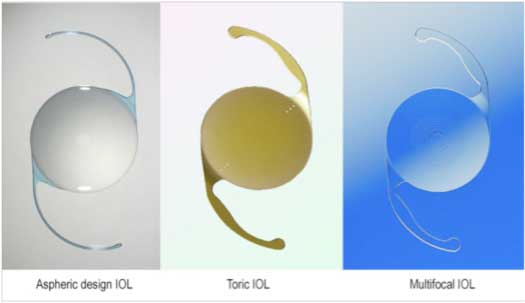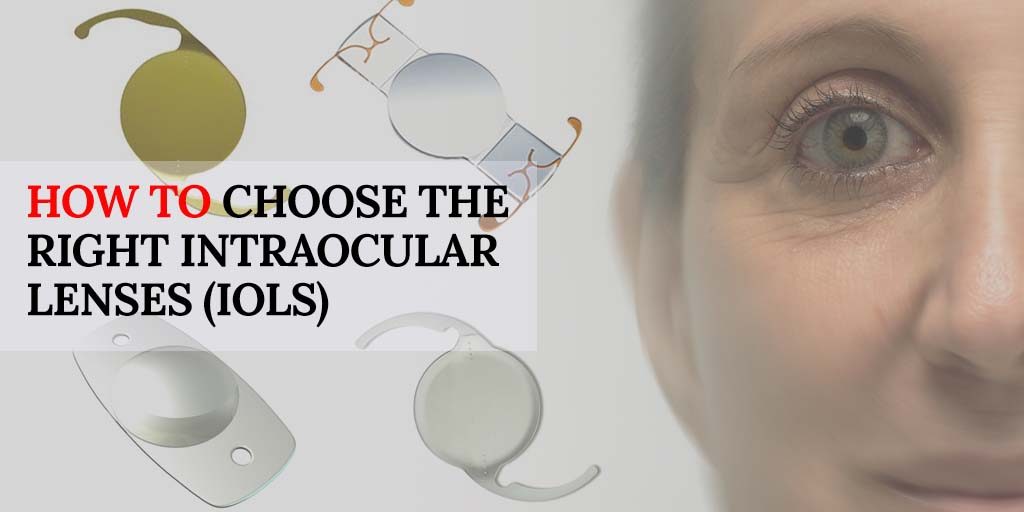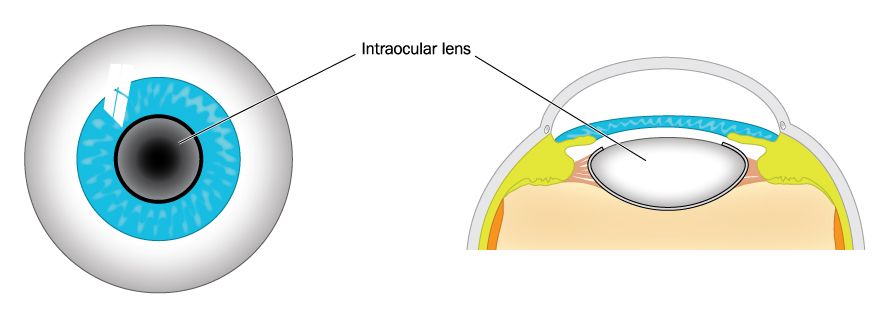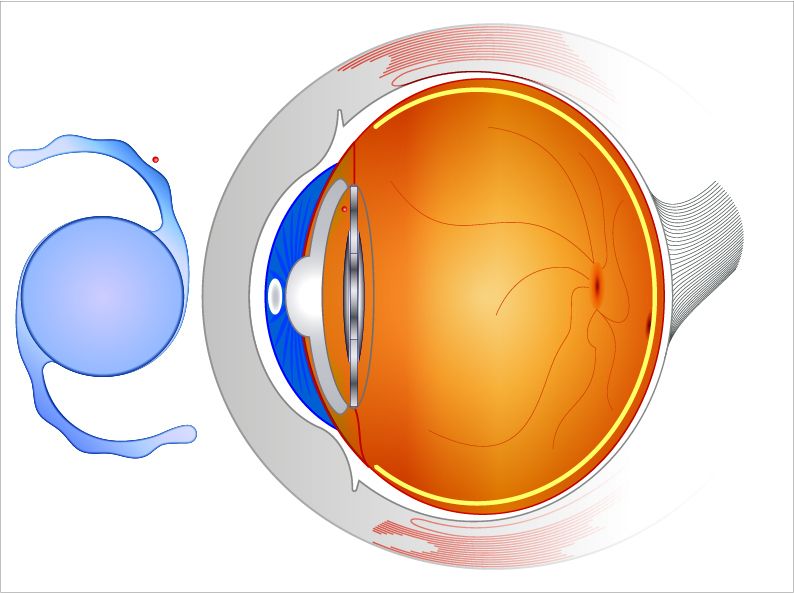Intraocular lenses, or IOLs, are medical devices that are implanted in the eye to improve vision. They can be used to correct a wide variety of vision problems, including nearsightedness, farsightedness, and astigmatism. In this comprehensive guide, we will discuss all aspects of IOLs including their history, types, benefits, and risks. We will also provide a list of the best intraocular lens manufacturers in the industry. So whether you are considering getting an IOL implant or just want to learn more about them, this guide is for you.
What Are Intraocular Lenses?

Intraocular lenses (IOLs) are clear, artificial lenses that are surgically implanted in your eye during cataract surgery or other lens replacement surgery. IOLs are used to replace your natural lens when it becomes cloudy or opaque from a cataract.
IOLs can also be used for refractive surgery, such as correcting nearsightedness, farsightedness, and astigmatism. There are different types of intraocular lenses, including mono-focal IOLs, multifocal IOLs, and accommodative IOLs.
Your eye surgeon will recommend the type of intraocular lens that is best for you based on your individual needs and goals. Intraocular lenses are typically made of acrylic, silicone, or a type of plastic. Intraocular lenses cannot be felt and do not require maintenance.
If you are considering cataract surgery or other lens replacement surgery, talk to your eye surgeon about the different types of intraocular lenses available and which one may be right for you.
Different Types of Intraocular Lenses

There are many different types of intraocular lenses, and the type that is best for you will depend on your individual vision needs. Some of these types are:
Mono-focal Intraocular Lenses
Mono-focal intraocular lenses are the most common type of IOL, and they are correct for either nearsightedness or farsightedness. In mono-focal IOLs, the eye surgeon will select the power of the lens based on your pre-operative assessment. This type of intraocular lens typically provides good distance vision, but you may still need glasses or contact lenses for reading and close work. Through a process called monovision, some patients may elect to have one eye corrected for distance vision and the other eye corrected for near vision.
Multifocal Intraocular Lenses
Multifocal intraocular lenses are designed to provide good distance vision, intermediate vision, and near vision. There are different types of multifocal IOLs, including:
- Extended depth of focus (EDOF) lenses: These lenses have a single focal point that is in between far away and near objects. EDOF lenses provide a larger range of clear vision than mono-focal IOLs, but they may not provide as clear of vision as a multifocal IOL.
- Multifocal lenses: These lenses have multiple focal points, which allow you to see clearly at all distances. Multifocal lenses are the best type of IOL for patients who do not want to wear glasses or contact lenses after surgery.
- accommodating lenses: These lenses work with the natural focusing ability of your eye muscles to provide clear vision at all distances. Accommodative intraocular lenses are the best type of IOL for patients who do not want to wear glasses or contact lenses after surgery.
Accommodative Intraocular Lenses
Also, Accommodative intraocular lenses are similar to multifocal IOLs in that they provide clear vision at all distances. However, accommodative IOLs work with the natural focusing ability of your eye muscles, while multifocal IOLs have multiple focal points. This type of lean also provides a larger range of clear vision than mono-focal IOLs. Sometimes doctors may recommend this type of intraocular lens to patients who have had previous refractive surgery, such as LASIK.
Toric Intraocular Lenses
Toric intraocular lenses are designed to correct astigmatism, which is a condition that causes blurred vision due to an irregular shape of the cornea. These Toric IOLs have different powers in different meridians, or directions, in the lens. This type of intraocular lens can provide good distance vision and minimize your need for glasses or contact lenses after surgery. In this type of surgery, the doctor will place the IOL in the same meridian as your cornea, which helps to correct astigmatism.
Uses of Intraocular Lenses
 Intraocular lenses are most commonly used to replace the natural lens of the eye when it has been removed during cataract surgery. IOLs are also used in a type of refractive surgery called phakic intraocular lens implantation, or PIOL, which corrects vision problems such as myopia, hyperopia, and astigmatism.
Intraocular lenses are most commonly used to replace the natural lens of the eye when it has been removed during cataract surgery. IOLs are also used in a type of refractive surgery called phakic intraocular lens implantation, or PIOL, which corrects vision problems such as myopia, hyperopia, and astigmatism.
Several different types of IOLs can be used depending on the needs of the patient. Monofocal IOLs provide clear vision at one distance, either near, far, or in between. Multifocal IOLs have multiple focal points and can correct for both near and far vision. Toric IOLs correct for astigmatism. And finally, there are accommodating IOLs, which change shape to focus on objects at different distances.
Intraocular lenses (IOLs) are most commonly used to replace the natural lens of the eye. This is when it has been removed during cataract surgery. Cataract surgery is a procedure to remove the cloudy lens of your eye and, in most cases, replace it with a clear intraocular lens.
IOLs are also used in a type of refractive surgery called phakic intraocular lens implantation, or PIOL. PIOL is a refractive surgery that corrects vision problems such as myopia (nearsightedness), hyperopia (farsightedness), and astigmatism.
How To Select Intraocular Lenses That Is Right For You?

Choosing a type of intraocular lens (IOL) is an important decision during cataract surgery. There are several types of IOLs available, and your eye surgeon will work with you to select the best IOL for your individual needs. Here are some factors to consider when choosing an IOL:
Your lifestyle and daily activities
If you lead a very active lifestyle or participate in sports, you may want to choose an IOL that corrects for nearsightedness or farsightedness, as this will give you the clearest vision possible at all distances.
Your overall health
If you have diabetes or another chronic health condition, your eye surgeon will consider this when selecting an IOL for you. Sometimes there may be many different types of IOLs that would work for you, and your surgeon will choose the one that carries the least risk for complications.
Your personal preferences
You may have a preference for an IOL that corrects for nearsightedness or farsightedness, or you may want an IOL that provides the clearest vision possible at all distances. Talk to your eye surgeon about your options and what would work best for you.
Your budget
There are a variety of IOLs available at different price points. Be sure to discuss your budget with your eye surgeon so they can help you select an IOL that fits within your budget. Also, the budget may not be the only factor to consider when choosing an IOL—be sure to also consider your lifestyle, overall health, and personal preferences.
Your vision needs
If you have presbyopia, which is the age-related loss of near vision, you may want to consider an IOL that corrects for both nearsightedness and farsightedness. This type of IOL is called a multifocal IOL. A multifocal IOL can give you clear vision at all distances, but it may take some time to get used to them.
After you have considered all of these factors, your eye surgeon will help you select the best IOL for your individual needs. They will also provide you with more information on what to expect before, during, and after surgery. Once you have all of the information you need, you can make an informed decision about which IOL is right for you.
How Are Intraocular Lenses Implanted?
The implantation of an intraocular lens is a very delicate procedure that is usually performed by an ophthalmologist. It is important to remember that this type of surgery is not without risks and complications.
During the process of implanting an intraocular lens, the ophthalmologist will make a small incision in the eye. Through this incision, they will then insert the intraocular lens into the eye. Once the intraocular lens is in place, the ophthalmologist will close the incision with sutures. There may also be many risks and complications associated with this type of surgery. These can include infection, inflammation, and even retinal detachment.
It is important to discuss all of the risks and potential complications of intraocular lens implantation with your ophthalmologist. This is always before undergoing the procedure. This way, you can be sure that you are making the best decision for your eye health.
Benefits of Intraocular Lenses

There are many benefits of intraocular lenses. This is why they are such a popular choice for those looking to improve their vision. Intraocular lenses can correct a wide variety of vision problems, including nearsightedness, farsightedness, and astigmatism. They can also be used to treat cataracts.
Some of these benefits are:
Correction of refractive errors
This is one of the most common and well-known benefits of intraocular lenses. Intraocular lenses can be used to correct a wide variety of vision problems, including nearsightedness, farsightedness, and astigmatism.
Treatment of cataracts
Cataracts are a common condition that causes the lens of the eye to become cloudy and opaque. This can lead to blurred vision and eventually blindness. However, intraocular lenses can be used to treat cataracts, restoring clear vision.
Reduction of glares and halos
Glares and halos are common side effects of refractive surgery, but they can also be caused by cataracts. Intraocular lenses can help to reduce these symptoms by improving the clarity of vision.
Improved night vision
Intraocular lenses can improve night vision by providing clear, sharp images. This can be especially helpful for those who suffer from night blindness or poor night vision.
There are many other benefits of intraocular lenses. These are including the prevention of retinal detachment, improved contrast sensitivity, and reduced risk of developing macular degeneration. Intraocular lenses are an excellent choice for those looking to improve their vision and correct a wide variety of refractive errors.
Complications of Intraocular Lenses
There are many different types of intraocular lenses. Also, each has its own set of potential complications. Here are some of the most common:
Cataracts: A cataract is a cloudy or opaque area in the lens of the eye. It can cause blurred vision and make it difficult to see.
Glaucoma: Glaucoma is a condition that damages the optic nerve. It can lead to blindness if left untreated.
Retinal detachment: The retina is the layer of tissue at the back of the eye that senses light and sends images to the brain. If it detaches from the back of the eye, it can cause vision loss.
Cystoid macular edema: Cystoid macular edema is a buildup of fluid in the macula, the part of the eye that allows you to see fine details. It can cause blurred vision.
These are just some of the potential complications of intraocular lenses. Be sure to talk to your doctor about all the risks and benefits before having any type of surgery.
Intraocular lens implants are considered safe and effective for most people. Complications are rare, but they can occur. Be sure to talk to your doctor about all the risks and benefits before having any type of surgery.
Conclusion
Intraocular lenses are a great way to improve your vision. There are many different types of intraocular lenses. Also, the type that is best for you will depend on your individual needs. Talk to your doctor about which type of intraocular lens is right for you.
We hope you enjoyed this comprehensive guide to intraocular lenses! If you have any questions or comments, please feel free to leave them below. And be sure to check out our other blog posts for more great information on eye health and vision care! Thanks for reading.
Cataract surgery is a safe and painless procedure. At EyeMantra we have a team of experienced eye surgeons, who will be happy to answer your any questions on cataract surgery, cataract surgery cost, cataract lens cost for different cataract surgery types- Phacoemulsification, MICS & Femto Laser Cataract. Call us at +91-9711116605 or email at [email protected] for inquiries.


